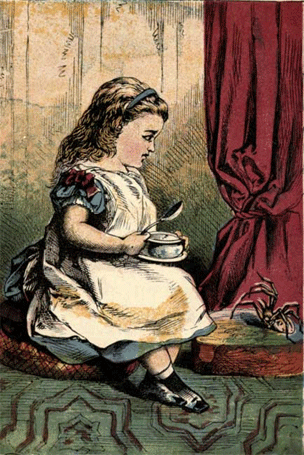by Douglas Grudzina
A few weeks ago, Prestwick House had the privilege of hosting an “externship” in cooperation with the Delaware Business and Industry Education Alliance. On the final day, one of the points our teacher-extern made was that, for the past two decades, everyone has been clamoring about (re)introducing “rigor” to the curriculum and to routine teaching and testing practices. Both an experienced Advanced Placement and a relatively new International Baccalaureate teacher, our intern observed that many teachers simply do not know how to “do rigor.” The models of rigorous instruction are few and far between, and often what is labeled “rigorous” is actually the same, old stuff repackaged with a DVD instead of a filmstrip.
At Prestwick House, we like to think that many of our materials do indeed model rigorous instruction and assessment, and we do support initiatives like the National Governors Association and Council of Chief State School Officers’ Common Core State Standards Initiative, which is all about rigor. So…to honor our former extern’s request to help her colleagues know “how to do rigor,” here is the first of a three-part series.
Part I: How many teachers does it take to screw in a light bulb (or introduce a literary concept)?
Admit it. How many times have you had a kid ask you, “When am I ever going to use this stuff?” Tell the truth. You know the question comes up just about every time you get into grammatical, rhetorical, linguistic, or literary terminology. You introduce the term, provide a definition and several superb examples, and the wise guy with the sideways baseball cap in the back of the room shouts out, _When am I ever going to use this stuff?_
Sadly, in far, far, far too many English language arts classrooms, the true answer is, “Never…because it’s going to be introduced to you every year from now until you graduate from high school.”
It’s no longer a new and controversial idea that children (and adults, for that matter) learn new words, not from word-of-the-day calendars or weekly vocabulary lists, but by listening and reading and then speaking and writing. We hear a new word. We guess at its meaning from the context. We might ask for clarification, and we might actually consult a dictionary (or similar source). But the vast, vast, vast majority of the time, we first encounter the word in use.
And … if we never ever hear the word again, or see it in print, or use it in our own speaking and writing, we will probably never “learn” it. It will not be a word we readily understand if and when we do encounter it.
But words we do use a lot—even “hard” words—we remember.
So, depending on what grade(s) you teach, how many times are we going to give our kids the same list of requisite terms brimming with definitions and examples? How many years in a row can we ask a kid to look at the same goofy poster that defines a literary term and offers a caricatured illustration of something? As if he’d never heard the word before!
If, once it’s introduced, all we do with a term like antithesis or metaphor or synecdoche—or, more importantly, if all we do with the concept—is point out that such-and-such a paragraph contains one, then we’re essentially telling the kid who asks _When am I ever going to use this?_ that he isn’t.
Consider the following question. (It’s a made-up question and does not refer to anything in this post, so don’t really try to answer it; you’ll only get frustrated.)
The third paragraph uses all of the following literary devices EXCEPT
A. metaphor.
B. simile.
C. onomatopoeia.
D. alliteration.
E. hyperbole.
On the surface, this seems like a perfectly legitimate question—questions like it often appear on large-scale assessments like AP, SAT, ACT, GRE, etc., etc. (actually, these specific terms are pretty basic for AP) … But there are actually very few and very narrow windows of instruction during which questions like this are valid.
The first is during large-scale assessment, the kind of test that the kid is (theoretically) going to take only once and that’s designed to assess the quality of his entire k – 12 education. Kids who get questions like this wrong are saying something very important about what they learned (or _didn’t_ learn) in school.
The second is within a week or two of the teacher’s introducing the newest of the five terms to the students. That’s a matter of curriculum. If your curriculum assigns these terms to, say, seventh grade, then this is a valid seventh-grade question. But if your curriculum assigns these terms to fifth and sixth grades, then the seventh- (or eighth- or ninth- or tenth-) grade teacher has no business asking such a question … _ever_. (Well, not with those terms.)
What the seventh- and eighth- and ninth- (etc., etc.) teacher _can and should_ do is _actually use_ the terms in regular classroom discourse.
_Don’t you think the onomatopoeia in Poe’s “The Bells” absolutely makes the poem?_
_How does the consonance in the first sentence of “The Fall of the House of Usher” contribute to the tone and mood of the story’s opening?_
_Compare Poe’s frequent use of the trochaic foot with Dr. Seuss’s use of the anapest. How is the poet’s choice of metric pattern appropriate (or inappropriate) for the subject matter of the poem?_
Yes … I am assuming the kid knows what a trochaic foot and an anapest are. I am assuming she’s been introduced to onomatopoeia and consonance. But even if my curriculum has reserved the introduction of those terms and concepts for the specific grade I teach, once I’ve introduced the terms, if I really want my kids talking and writing intelligently about language and literature, _I’ll find ways to make my kids use the terms_!
By the way, the Common Core State Standards developed by the National Governors Association and the Council of Chief State School Officers have this: “Describe how words and phrases (e.g., regular beats, alliteration, rhymes, repeated lines) supply rhythm and meaning in a story, poem, or song” as a Reading/Literature standard for grade -_Two_.
Which question is more fun to discuss:
_What is the metrical patter of Poe’s “Annabel Lee”?_
(irregular anapestic tetrameter/trimeter)
or
_Why is the metrical pattern of Poe’s “Annabel Lee” ironic?_
(because the anapestic foot suggests a lighthearted, musical effect, and the poem is about a necrophiliac)
So … one way to “do rigor” in your English class is to break out of the rut of constant introduction, definition, and identification. Even if the kid doesn’t (or pretends not to) know a term that was supposed to have been introduced earlier in the curriculum (like second grade!), you don’t need to reteach it. Most of the evidence suggests he’ll pick up the term just fine by hearing it, seeing it, and being … uh … _encouraged_ to use it in normal discourse.
Even if it is _your job_ to introduce your kid to the term, after you’ve introduced it, _use it_. Are you _really_ going to admit that your kids aren’t ever going to use these terms? (Well, they might come up on an SAT question …)
Another, related, way to “do rigor” is to keep clear for yourself the difference between the term and the concept. This post has been about introducing and using _terminology_ in your classroom. Kids develop an understanding of the _concepts_ much, much earlier—often even before they begin school.
Onomatopoeia might be a new word (and very challenging to spell) to a fifth-grader. But toddlers understand the idea of _clap, clap, tick, tock, bang, crash,_ and _sizzle_.
Synecdoche and metonymy sound like a million-dollar words, but even little kids enjoy the non-literalness of lending a hand, holding one’s tongue, and having busy fingers. (Well, some research—Panther, Klaus-Uwe and Günter Radden. _ Metonymy in Language and Thought_. Philadelphia: John Benjamins North America, 1999.—suggests that kids don’t really develop a strong sense of metonymy until four or five years of age—but that’s still way before high school when we typically “introduce” it.
When you introduce these terms, you are not opening new worlds of ideas for the kid, you are merely giving him a name for something he already knows. If you teach it like that, he’s much more likely to remember (and use) the terms, and you’ll be much less likely to keep the kid at the level of identifying things that he’s been playing around with since before kindergarten.
So “rigor” isn’t really all that hard to achieve. It doesn’t require a huge overhaul of your curriculum or a mass dumping of all of your previous lesson plans. It does, however, require a slight shift in paradigm, an admission that you are not solely responsible for every bit of knowledge the kid will ever acquire, and a suspicion that your kids really do know more than they’re letting on.
So, it’s really like that old self-fulfilling prophesy (actually, it _is_ the old, self-fulfilling prophesy): our kids will be as dumb as we let them or as smart as we require them.
Why let them off too easy?
--
Want to read more? Check out Part II and Part III of this article.
Which French author was shot in the leg and left with a permanent limp by his nephew, a young man who suffered from paranoia?














